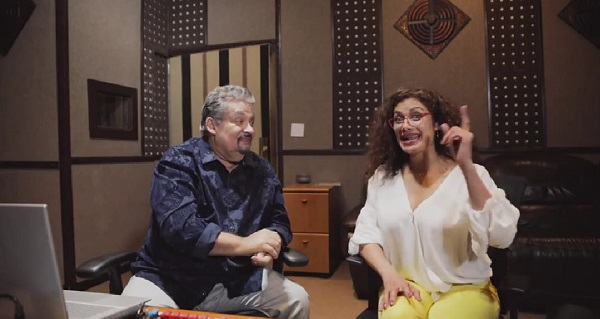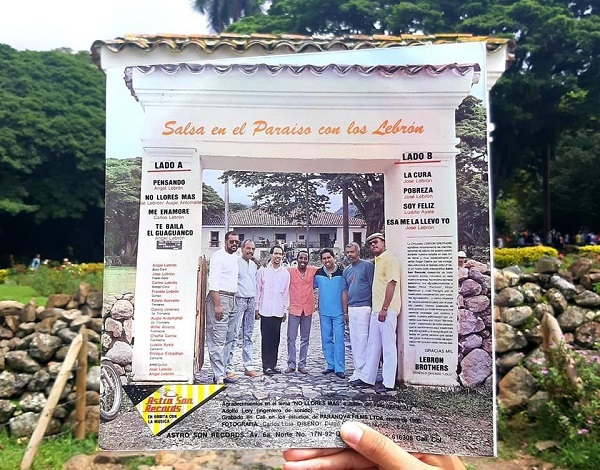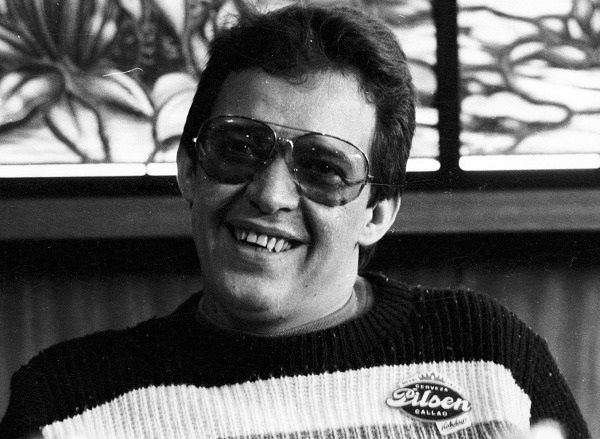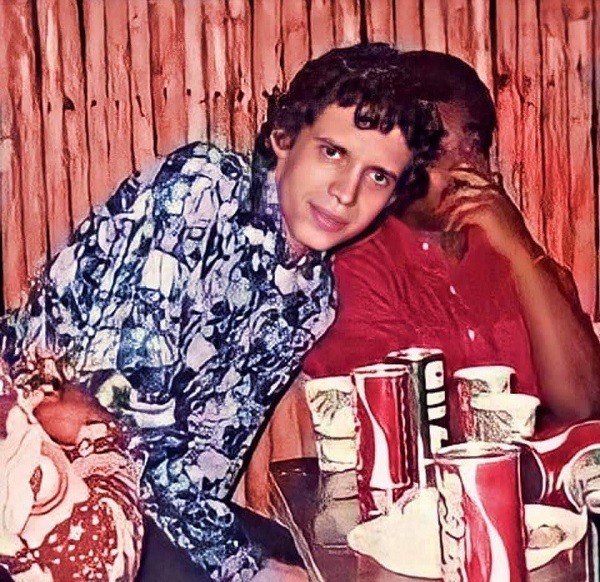How Oscar D’ León’s “La Salsa Mayor” came about, is a story that has already been commented on, including the subsequent separation of musicians that the aforementioned orchestra had, which gave way to the formation of another well-known group (Nuestra Orquesta la Salsa Mayor), is also a well-known story, but one as a good music lover always wants to continue to investigate and whenever the opportunity arises to make a healthy discussion about the subject in question, one does so without any qualms.
That is why it is never too much to remember some interesting facts that adorn this story, such as the headline that appeared on the front page of Swing Latino magazine in November 1977, which read: “KO a la Dimensión? OSCAR D’LEÓN after signing WLADIMIR.
In summary, the article said that Wladimir had intentions of leaving Dimension because of an alleged refusal of a loan request, a situation that induced the vocalist to want to sign with another orchestra. Another excerpt of the article says that Oscar D’León in his eagerness to have Wladimir in his orchestra, would have given him the money to satisfy his economic needs, but in exchange he would have signed a contract with the orchestra.
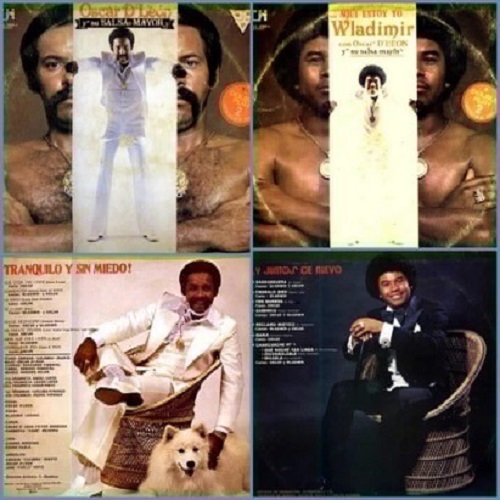
In short, by that time in November 1977, these were only speculations, of course, as it is also mentioned in the article in a jocular way “When the river sounds it is because it brings stones”.
The truth is that the year 1978 arrived and in the Swing Latino of March another headline appeared on the front page “¡LA DIMENSIÓN LATINA SE VA DE VENEZUELA! pero Wladimir se queda con Oscar”, which clearly shows that those speculations or rumors that were made in the salsa milieu at that time were a reality that quickly materialized.
“Last February 20, the bolerista presented his resignation to Dimensión Latina and began to work his notice period. In the meantime, he has already begun his rehearsals with Salsa Mayor and will soon be fully incorporated into this group that already threatens to become a real monster not only nationally but also beyond our borders, which we have no doubt he will now achieve with this valuable acquisition” (Swing Latino. March 1978).
Now, only a month had passed when another news about the orchestra of the dancing bass shakes the salsa milieu, “¡SE DISOLVIO LA SALSA MAYOR!”, headline that appeared in Swing Latino for May 1978 and stating: “Seven of the ten musicians that made up the prestigious group of Oscar D’León, left the orchestra for economic reasons”.
The rest is already known history, the negrito from Antimano reassembled his orchestra with some musicians from “La Critica” and others who came from the orchestra “La Renovación”, which at the same time also dissolved and the rumba continued.

In August of that year 1978, Oscar D’León’s last album was announced under the name of “LA SALSA MAYOR”, a fabulous double LP, that just by looking at its cover you could already feel the strength with which the sonero from Caracas was coming along with the diminutive in stature but great with his voice, Wladimir Lozano.
The internal title of the album spoke for itself, “TRANQUILO Y SIN MIEDO”, this makes us think that the phrase had a double meaning, remember that the musicians who defected to form the other Salsa Mayor, recorded that famous song: “Fuimos Amigos”, where they throw a few puns at Oscar and this “calm and fearless”, returns them in the song: “La Mano”… “Why did not you follow me when I gave you my hand?”Now it weighs on you, you fell in the mud”… Chorus: “Que te vaaaya bien”.
The album is excellent as almost all the ones published by D’León in those past decades, all the songs are good, but I can’t help but comment and recognize that the song that I liked and still like the most from this double album is “MARIA”, maybe because in every man’s life there has always been a Maria…My respects and salsalutation to all of you.
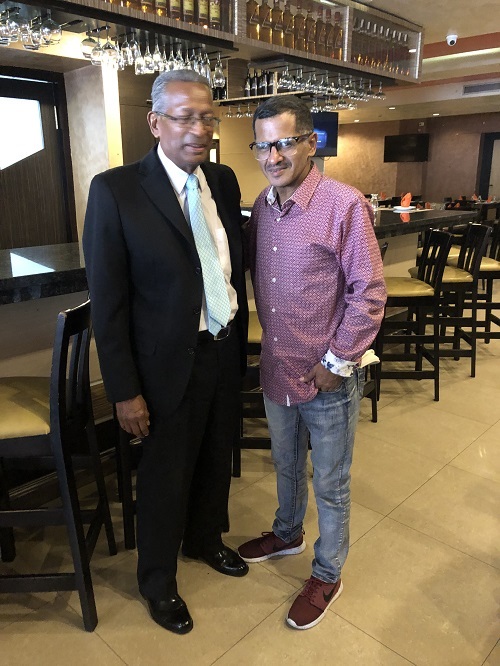
Oscar D’León y su Salsa Mayor (double play) (1978) ths-1225
Disc 1 – Side A
- Que cosa tan linda (Oscar D’León) Singer: Oscar D’León
- Consentida (Alfredo Nuñez de Borbón) Singers: Wladimir and Oscar
- La mano (Sandy Omar González) Sung by: Oscar
- Te llamo (D.D.) Sing: Wladimir and Oscar
Disc 1 – Side B
- Dulce desengaño (Armando Beltrán) Sung by: Oscar and Wladimir
- De frente Panamá (L: Andrés Vega, M: José Zamora) Sung: Oscar D’León
- Mira que eres linda (J. Brito) Sung by: Wladimir Lozano
- Consígueme eso (Pedro N. Perez) Sings: Oscar D’León
Disc 2 – Side A
- Sandunguera (M. Guerra) Sung by: Wladimir and Oscar.
- Piénsalo bien (Agustín Lara) Sings: Wladimir Lozano
- Ven morena (R. Paz) Sing: Oscar D’Leó
- Ausencia (Rafael Hernández) Sing: Oscar and Wladimir
Disc 2 – Side B
- Reclamo místico (M. Matamoros) Sing: Wladimir y Oscar
María (Florentino Padrón) Sing: Oscar D’León
- Chancunche No. 1: Sing: Wladimir and Oscar
*Que noche tan linda (B. Diez, A. M. Romeu)
*Inconsolable (Rafael Hernández)
*Micaela (Raúl Guillaume)]
Musicians:
Enrique “Culebra” Iriarte (Piano).
Oscar D’León (Bass)
Rhadames Pimentel (Congas)
Edward Pimentel (Timbal)
Hungary Rojas (Bongo)
Ángel López (1st Trumpet)
César López (2nd Trumpet)
César Pinto (3rd Trumpet)
Tarcisio Piñango (1st Trombone)
Pedro Piñando (2nd Trombone)
Andrés Mendoza / Pedro Vilela (Tres)
Oscar D’León (Vocal)
Wladimir Lozano (Vocal)
Oscar D’León / Víctor Mendoza / Humberto “Tigre” Becerra (Backing Vocals)
Enrique Iriarte / Oscar D’León / José “Cholo” Ortiz (Arrangements)
Other Credits:
Intersonido C.A. Recording Studios.
Sound Technicians: Agustín Verde and Carlos Guzmán
Mixing: Rafael Hernandez
Art Direction: Víctor Mendoza
Idea, Design and Album Art: Drago Fernández
Photos: All Freddy.
Source:
José “Cheo” Guevara
Enrrique “Culebra” Iriarte
You can read: Víctor Porfirio Baloa Díaz, more commonly known as Porfi Baloa

